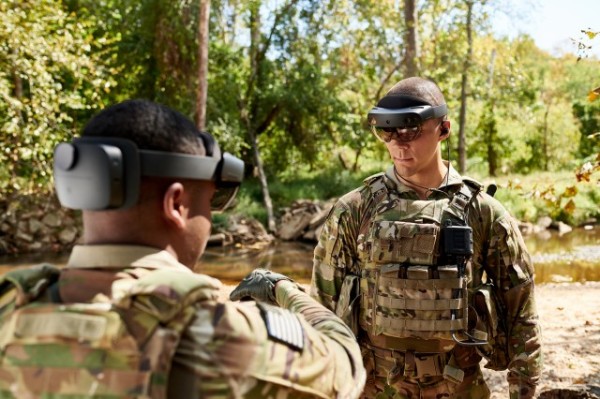

For now, the Army still plans to get its futuristic heads up display into soldiers’ hands by late fiscal year 2021 — but that’s not to say there won’t be adjustments to other pieces of the timeline, due to the novel coronavirus (COVID-19) pandemic.
The Integrated Visual Augmentation System (IVAS) is one of the innovative technologies that service leaders have been most excited about, viewing it as a game-changer for infantry units, providing “fighter pilot-like situational awareness to the individual soldier,” as Army Times put it. And the Army plans on fielding over 40,000 IVAS goggles by late FY2021, according to the service’s budget request which was released in February.
Still, the Army’s plan to conduct a third “soldier touch point” to gather feedback on the device in July has been pushed back to the fall, officials said Friday, citing social distancing guidelines and supply chain disruption.
Participating soldiers may have to go into a two-week isolation period before the testing begins, said Brig. Gen. Dave Hodne, the Army’s infantry chief.
“The Army has frameworks for operating in biological hazards,” Hodne said. “So it would require us to make adjustments. …. I think we could probably come up with a creative, isolated soldier touch point that might incur more time to the units supporting it, to achieve the necessary isolation conditions that we’d need.”
STP3 will be a company-level test over 72 hours at Fort Pickett, Virginia — the largest touch point so far. As of now, the testing plans to include paratroopers with the 82nd Airborne Division, though the decision is ultimately up to U.S. Forces Command.

STP3 will introduce the integrated tactical network — a “revolutionary” capability, per Breaking Defense — which will drastically increase soldiers’ ability to communicate with their commanders, and in turn, provide more situational awareness on the ground, Col. Chris Schneider, the IVAS project manager, explained on Friday.
Another capability soldiers will test out during STP3 is 3D terrain, which will allow them to view a “highly accurate” version of a specific environment through the goggles and practice the mission before they actually carry it out. Schneider said he doesn’t think the actual hardware design of the system will change much at STP3 given how much feedback they’ve already received and worked with.
“Because we’ve had so many soldiers involved with this program from the very beginning, it gives us a high degree of confidence that at least the design is the right design,” he said. “I think our challenge then is, now that we’ve got the right design, to drive down the weight of the system so soldiers want to wear it all the time.”
Brig. Gen. Tony Potts, head of PEO Soldier, added that right now, the system weighs around two and a half pounds, and ideally, they’d like to get it below two pounds. Either way, it’s still lighter than the Enhanced Night Vision Goggles-Binocular (ENVG-B) that some soldiers started receiving in the fall.
